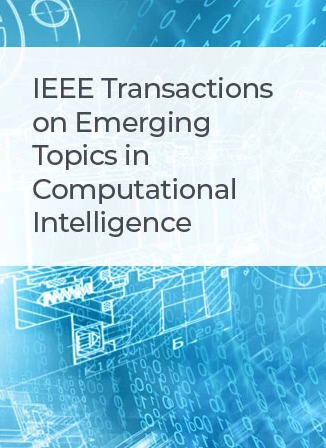PFPS: Polymerized Feature Panoptic Segmentation Based on Fully Convolutional Networks
IF 5.3
3区 计算机科学
Q1 COMPUTER SCIENCE, ARTIFICIAL INTELLIGENCE
IEEE Transactions on Emerging Topics in Computational Intelligence
Pub Date : 2024-12-19
DOI:10.1109/TETCI.2024.3515004
引用次数: 0
Abstract
Panoptic segmentation requires the prediction of a pixel-level mask with a category label in an image. In recent years, panoptic segmentation has been gaining more attention since it can help us understand objects and the environment in many fields, such as medical images, remote sensing images, and autonomous driving. However, existing panoptic segmentation methods are usually challenging for multi-scale object segmentation and boundary localization. In this paper, we propose a Polymerized Feature Panoptic Segmentation (PFPS) to enhance the network's feature representation ability by polymerizing the extracted stage features. Specifically, we propose a Generalization-Enhanced Stage Feature Generation Module (GSFGM) to extract and enhance the stage features. In the GSFGM, a novel Sampled and Concated Feature Generation (SCFG) is designed as an individual component, which polymerizes the convoluted backbone features to enhance multi-scale feature representation. Thereafter, we propose a Stage Feature Re-weight Module (SFRM) to ensure the network can learn efficient information from the massive channels. Moreover, we further propose a Unified Encoder Module (UEM) to provide spatial information and compress the high-dimensional features by coordinating convolution operations and channel attention. To demonstrate the superiority of the proposed PFPS, we conduct experiments on the COCO-2017 and the Cityscapes validation datasets. The experimental results indicate that the PFPS achieves a better performance in PQ of 43.0%, SQ of 80.4%, RQ of 51.9%, PQth of 48.6%, SQth of 82.6%, RQth of 58.1%, PQst of 34.6% on COCO-2017 validation dataset, while PQ of 61.7%, and PQst of 67.9% on Cityscapes validation dataset.PFPS:基于全卷积网络的聚合特征全视分割
全视分割需要在图像中预测带有类别标签的像素级掩模。近年来,在医学图像、遥感图像、自动驾驶等许多领域,全视分割技术可以帮助我们理解物体和环境,因此受到越来越多的关注。然而,现有的全视分割方法在多尺度目标分割和边界定位方面存在一定的问题。在本文中,我们提出了一种聚合特征全光学分割(PFPS),通过聚合提取的阶段特征来增强网络的特征表示能力。具体来说,我们提出了一个泛化增强的舞台特征生成模块(GSFGM)来提取和增强舞台特征。在GSFGM中,设计了一种新颖的采样和连接特征生成(SCFG)作为单独的组件,该组件将卷曲的骨干特征聚合在一起,以增强多尺度特征表示。然后,我们提出了一种阶段特征重权重模块(SFRM),以确保网络能够从海量通道中学习到有效的信息。此外,我们进一步提出了一个统一编码器模块(UEM),通过协调卷积操作和通道关注来提供空间信息并压缩高维特征。为了证明所提出的PFPS的优越性,我们在COCO-2017和cityscape验证数据集上进行了实验。实验结果表明,PFPS在COCO-2017验证数据集上的PQ值为43.0%,SQ值为80.4%,RQ值为51.9%,PQth值为48.6%,SQth值为82.6%,RQth值为58.1%,PQst值为34.6%,而在cityscape验证数据集上的PQ值为61.7%,PQst值为67.9%。
本文章由计算机程序翻译,如有差异,请以英文原文为准。
求助全文
约1分钟内获得全文
求助全文
来源期刊

IEEE Transactions on Emerging Topics in Computational Intelligence
Mathematics-Control and Optimization
CiteScore
10.30
自引率
7.50%
发文量
147
期刊介绍:
The IEEE Transactions on Emerging Topics in Computational Intelligence (TETCI) publishes original articles on emerging aspects of computational intelligence, including theory, applications, and surveys.
TETCI is an electronics only publication. TETCI publishes six issues per year.
Authors are encouraged to submit manuscripts in any emerging topic in computational intelligence, especially nature-inspired computing topics not covered by other IEEE Computational Intelligence Society journals. A few such illustrative examples are glial cell networks, computational neuroscience, Brain Computer Interface, ambient intelligence, non-fuzzy computing with words, artificial life, cultural learning, artificial endocrine networks, social reasoning, artificial hormone networks, computational intelligence for the IoT and Smart-X technologies.
 求助内容:
求助内容: 应助结果提醒方式:
应助结果提醒方式:


